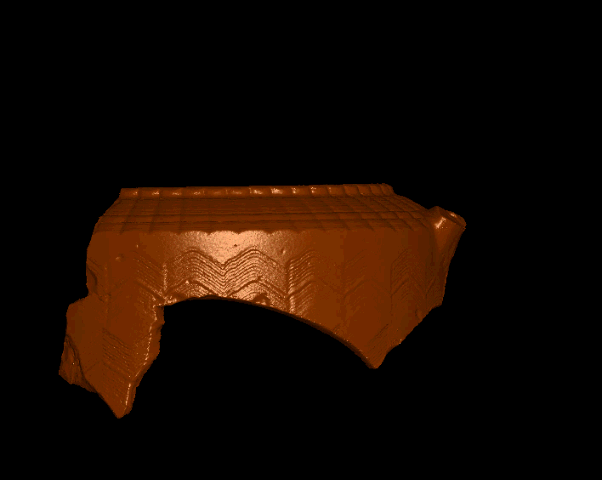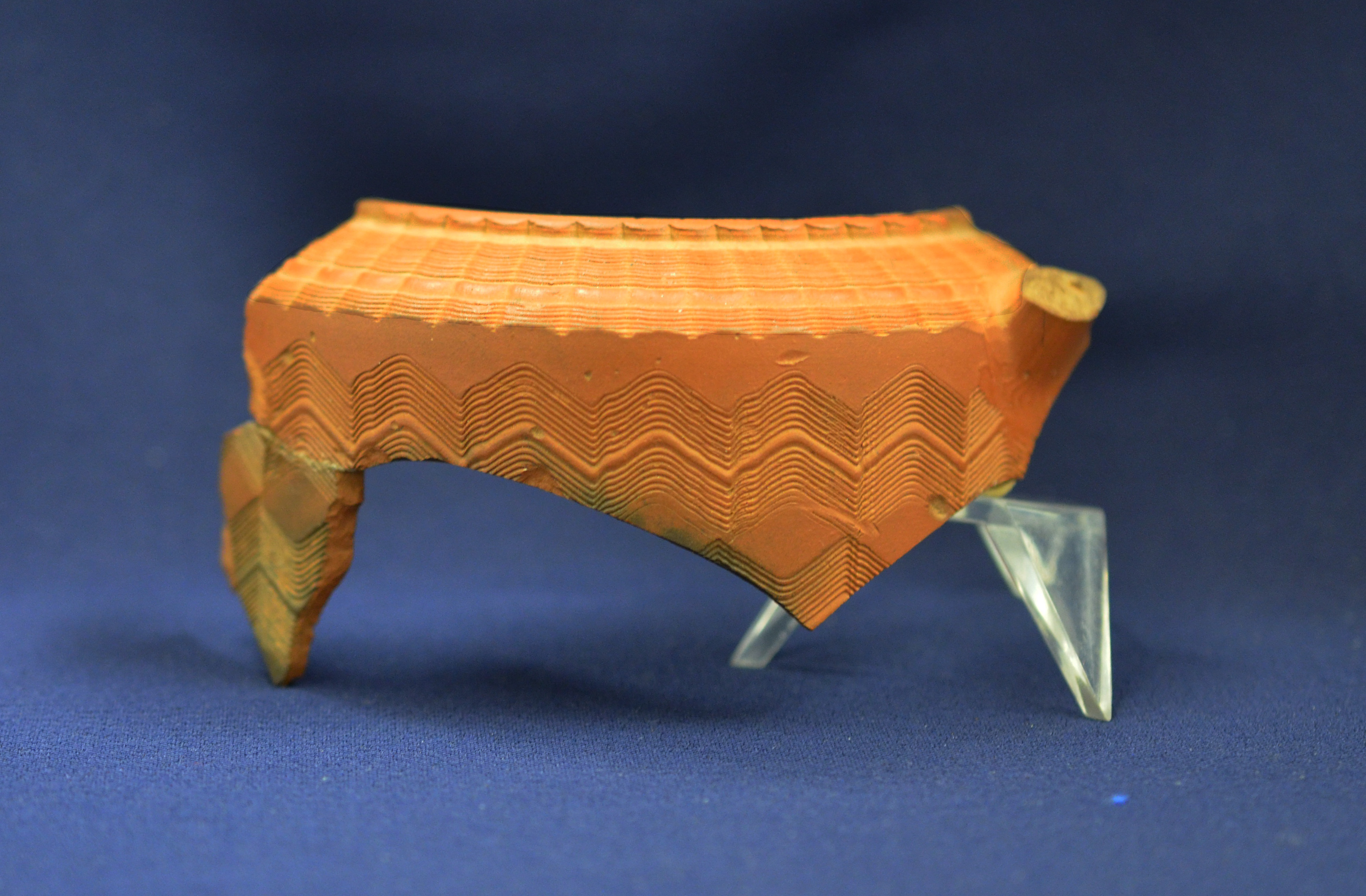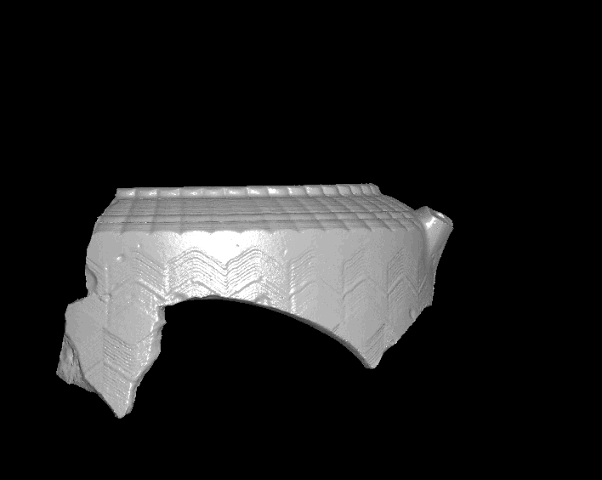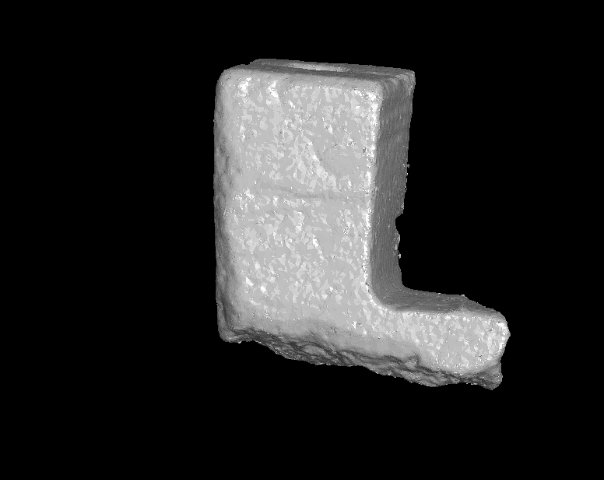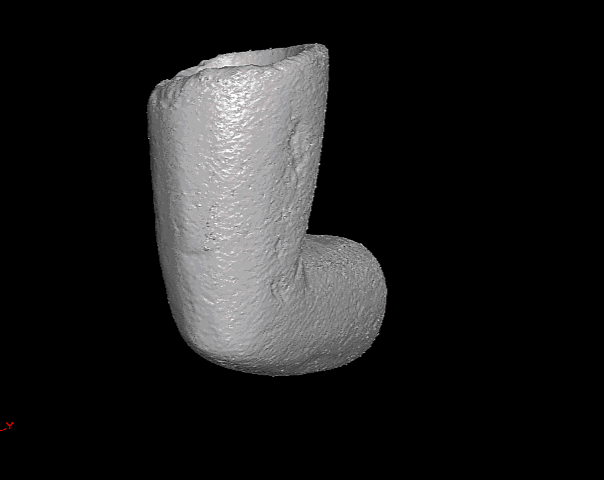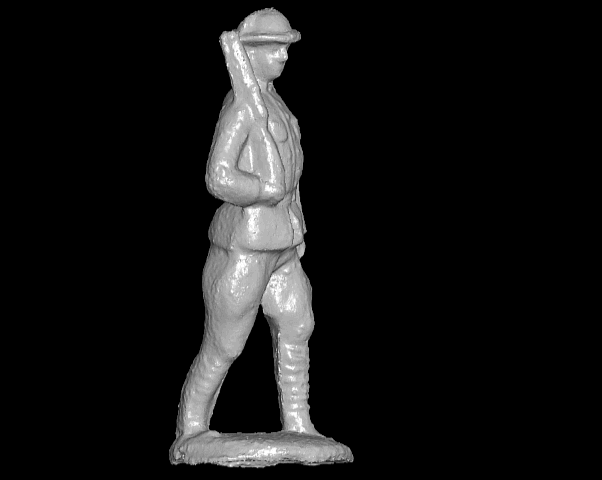Archaeology Blog
Now Showing at Poplar Forest: Artifacts in 3D!
Why is our teapot spinning?!
This is an animated 3D image of one of our Rosso Antico teapot fragments. It was created by Dr. Bernard K. Means and student researchers from the Virtual Curation Laboratory at Virginia Commonwealth University. In August 2012, Dr. Means and members of his team brought their 3D scanner to Poplar Forest to create detailed images of some of the artifacts in our collection.
Dr. Means and his team at the Virtual Curation Laboratory have scanned artifacts at many archaeological sites across Virginia. 3D scanning has many potential benefits for archaeology. Creating high quality 3D images of artifacts adds a new technique for preserving archaeological information. In addition, digital archives of 3D artifact images can be accessed by a much wider audience, including academic researchers and the public. Virtual artifact collections would allow anyone to view and study artifacts that they cannot physically access. You can learn more about 3D scanning and digital artifact collections through the Virtual Curation Laboratory blog: http://vcuarchaeology3d.wordpress.com/
These images compare a regular photograph of the Rosso Antico teapot to a black and white 3D scan:
3D scan of a stone, smoking pipe bowl blank (the preform for a carved pipe):
3D scan of a complete stone, smoking pipe bowl:
3D scan of a WWI era toy soldier made of tin:
We hope to use the 3D images created from the Poplar Forest collections to help our visitors see artifacts up close and better understand archaeology at Poplar Forest.
We would like to thank Dr. Bernard K. Means, Director of the Virtual Curation Lab and all of the VCL research associates for visiting our lab and creating these incredible images for us.
Additional Information:
Virtual Curation Lab at VCU blog
Society for Historical Archaeology blog, “3D Artifact Scanning at VCU Archaeology”
